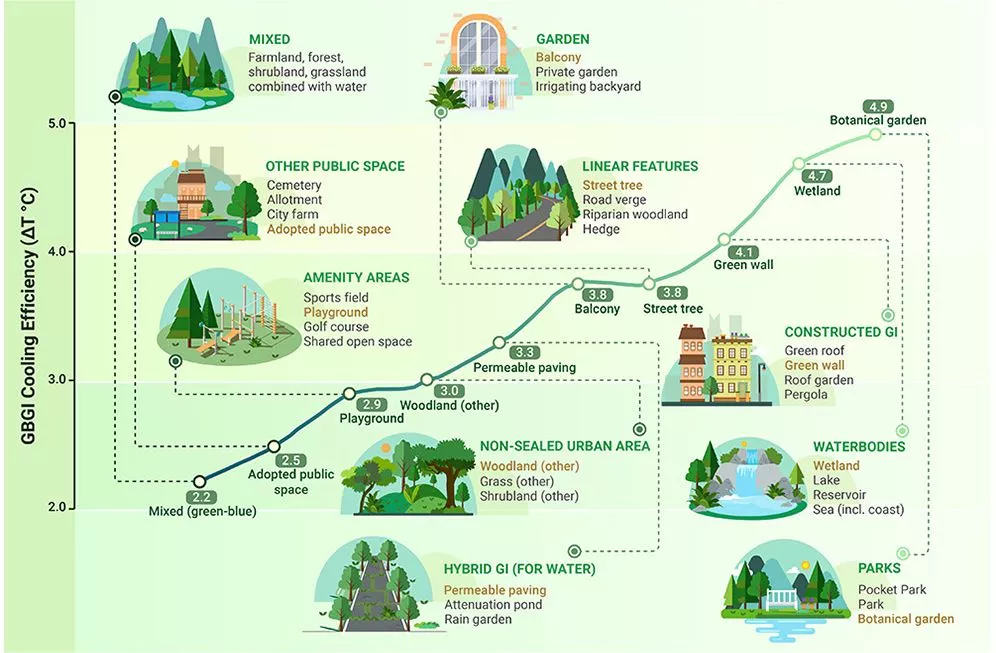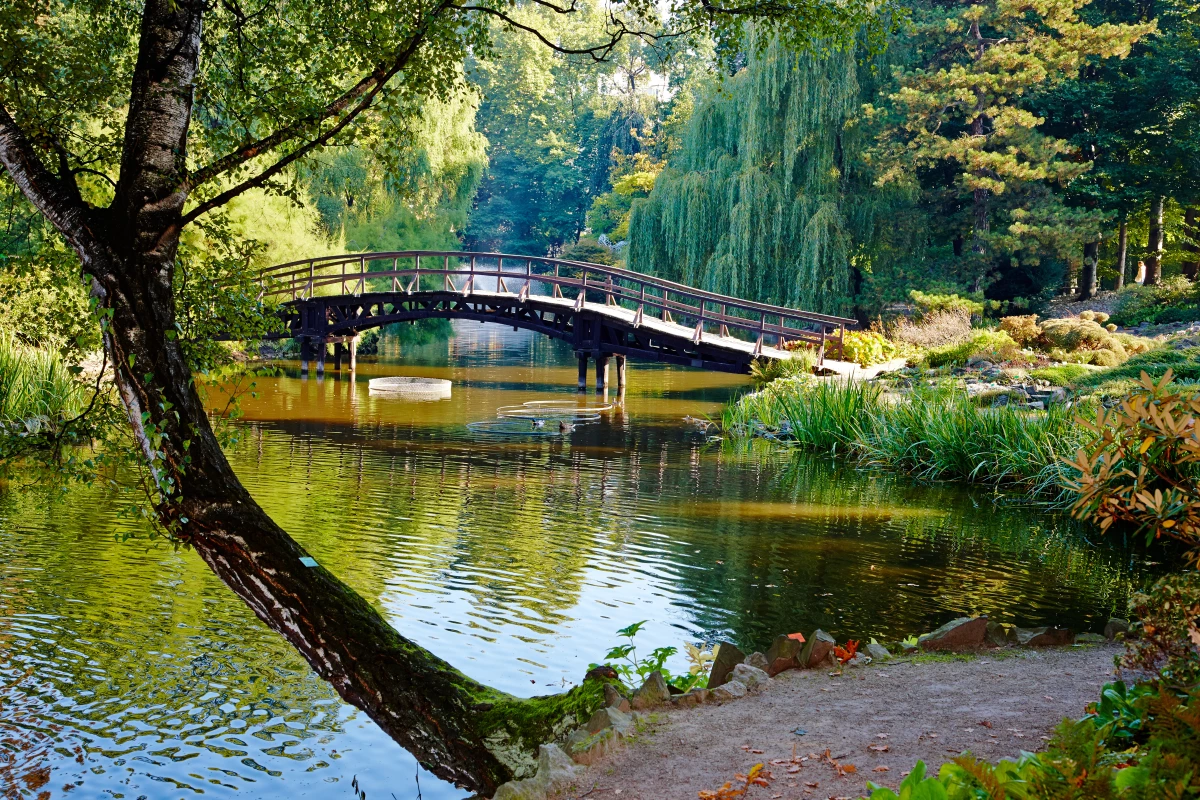Temperatures around the world are on the rise, with 2023 recently confirmed as the hottest since records began. A new study has found that bringing nature into cities could help lower temperatures during heatwaves.
If you're lucky enough to live near forested areas, you'll know that one of the best ways to escape the mid-day heat while out rambling is to head for tree cover. Living in a concrete jungle might present fewer options than being out in the sticks, but even a visit to a local park or botanical garden could help you keep your cool.
In fact, research led by the University of Surrey in the UK has found that botanical gardens can lower the temperature of inner city air by as much as 5 °C. Wetlands and rain gardens are not far behind in the cooling stakes, at 4.7 and 4.5 °C respectively, trees planted along streets also lowered air temps by 3.8 °C while city parks managed 3.2 °C.

"We have known for some time that green spaces and water can cool cities down," said Professor Prashant Kumar, founding director of the Global Center for Clean Air Research at the University of Surrey, as well as professor and chair in Air Quality and Health, and co-director at the Institute for Sustainability. "However, this study provides us the most comprehensive picture yet. What's more – we can explain why. From trees providing shade, to evaporating water cooling the air."
The paper notes that an air temperature of 40.3 °C (104.5 °F) broke records in the UK on July 19, 2022, some 62,862 deaths were linked to summer heat across Europe in the same year while the 2003 heatwave in Europe led to an economic loss of €16 billion thanks to drought and crop failures. The team of 29 scientists from the UK, Australia, Brazil, China, Hong Kong and the US also says that the IPCC reckons that "green and blue urban infrastructure elements are particularly effective in reducing air temperatures in cities."
From a pool of more than 27,000 research papers, the researchers selected 202 for meta-analysis based on a number of urban green-blue-grey infrastructure categories – including parks, engineered greening projects, wetlands, green walls, parks and botanical gardens.
Trees and plants, for example, help reduce heat by reducing the amount of direct sunlight reaching the ground, while also releasing moisture into the air. Water bodies cool the surrounding environment via "evapotranspiration, shading, the albedo effect, groundwater recharge and temperature buffering" and could also serve as heatsinks, cooling during daylight hours and offering warming potential at night. Green roofs and walls not only help insulate buildings, but also reduce heat absorption, and vegetation can serve as windbreaks for natural ventilation.

We've already seen a number of architecture projects around the world employ large amounts of greenery to both enliven facades and promote local cooling, along with beneficial landscaping. The researchers conclude by stating that "all urban green-blue-grey infrastructure types provide cooling benefits" and that "nature needs to be brought back into densifying and expanding cities and any opportunity to expand plant cover on the ground, podiums, wall and roofs must be taken."
But they also recognize that there isn't one simple solution to suit every locale, and much will depend on effective planning – "before selecting suitable urban green-blue-grey infrastructure interventions, it is necessary to assess the local context, environmental conditions, available resources and the budget to ensure their long-term effectiveness and avoid possible drawbacks."
"Our paper confirms just how many ways there are to keep cool," added Professor Maria de Fatima Andrade of the Atmospheric Sciences Department at the University of Sao Paulo, Brazil. "But it also reveals how much work is left to do. Institutions around the world need to invest in the right research – because what’s very clear from our study is that there is no one-size-fits-all solution. It depends on what works for your community."
The study is open access via the journal The Innovation.
Source: University of Surrey




